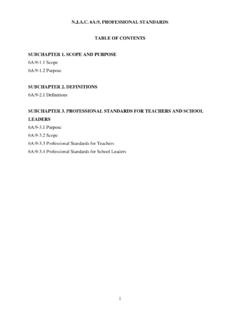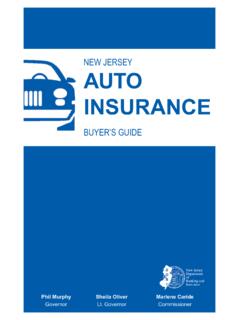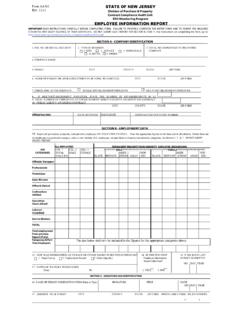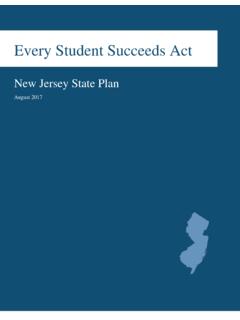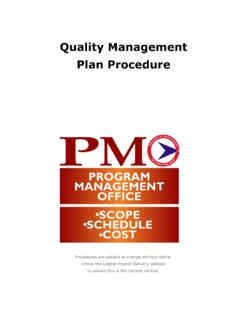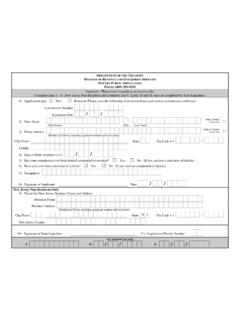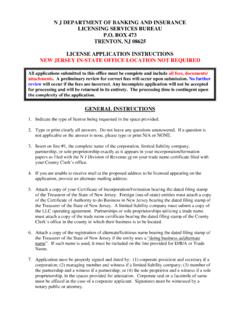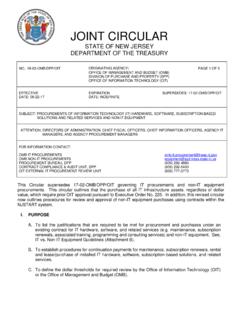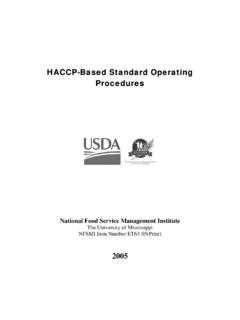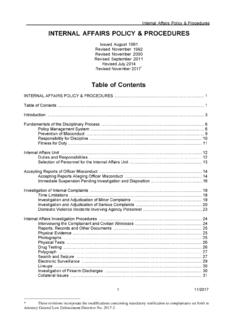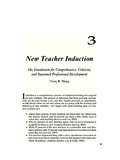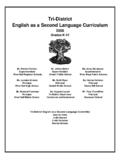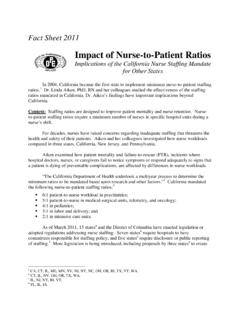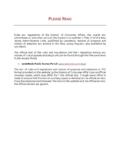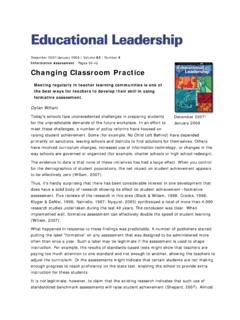Transcription of New Jersey Professional Standards for Teachers …
1 New Jersey DEPARTMENT OF EDUCATION. New Jersey Professional Standards for Teachers ( 6A: ): Foundations of Effective Practice Background Effective May 5, 2014, the New Jersey Professional Standards for Teachers have been updated to incorporate current research on teaching practice, new understandings of learners and the learning process, and to align to the 2011 the Interstate teacher Assessment and Support Consortium (InTASC). Model Core Teaching Standards . These Standards : Describe the performances, knowledge, and dispositions that Teachers need to be effective in supporting college and career readiness for all students;. Outline the principles of teaching practice that cut across all subject areas and grade levels and are necessary to improve student achievement; and Serve as the common foundation for pre-service teacher education, certification, induction and mentoring, educator evaluation, and Professional development.
2 According to InTASC, these updated Standards : Articulate what effective teaching and learning looks like in a transformed public education system one that empowers every learner to take ownership of their learning, that emphasizes the learning content and application of knowledge and skill to real world problems, that values the differences each learner brings to the learning experience, and that leverages rapidly changing learning environments by recognizing the possibilities they bring to maximize learning and engage learners. A. transformed public education system requires a new vision of Fundamental Understandings The following fundamental understandings anchor the content of the Standards : Teaching and learning are dynamic processes. Instruction is rooted in integrated and reciprocal classroom practice, and educator effectiveness is closely tied to student learning.
3 Expertise in teaching develops over time. While the previous Standards were geared more to beginning Teachers , these Standards are rooted in Professional practice across the continuum of teacher development. 21st century skills are fundamental. Teachers need to foster students' curiosity, creativity, innovation, problem solving, global literacy, communication, and interpersonal skills. Students need to understand technology and ethics and be able to synthesize information across disciplines. The focus must move from Teachers ' teaching to learners' learning. Teachers must acquire and apply the knowledge and skills to customize and personalize learning for learners with a range of individual differences. Assessment literacy is an essential skill. Teachers need to have greater knowledge and skill around how to develop a range of assessments and how to use assessment data to improve instruction and support learner success.
4 A collaborative Professional culture improves teaching effectiveness. We can no longer treat teaching as an isolated activity. When Teachers collectively engage in participatory decision- making, designing lessons, using data, and examining student work, they are able to deliver more rigorous and relevant instruction. 1 Council of Chief State School Officers, April 2011. Updated August 2014 1. New Jersey DEPARTMENT OF EDUCATION. Teachers should embrace leadership roles. Teachers should advocate for their own and their students' needs, actively investigate new ideas to improve teaching and learning, participate in the collaborative culture, and advance the profession. Integrated Themes New to these updated Standards is the inclusion of key themes across multiple Standards . In some cases, the theme is not explicitly stated but can be inferred from the description of the knowledge, disposition, or performance within the standard.
5 The integrated themes are as follows: Collaboration Communication Creativity/innovation Critical thinking/problem solving Cultural competence English language learners Families and communities Individual differences Interdisciplinary/multiple perspectives Professional Learning Student-directed learning teacher responsibility Technology Use of data to support learning Adaptation of the 2011 InTASC Model Core Teaching Standards to the NJ State Context Although the updated NJ Professional Standards for Teachers closely track with the 2011 InTASC Model Core Teaching Standards , they are not identical. Some changes in language and organization were necessary to align the Standards with New Jersey law, the prior state teaching Standards , and statewide priorities. The complete text of the 2014 NJ Professional Standards for Teachers with highlights showing the divergence from the 2011 InTASC Model Core Teaching Standards can be found here.
6 Organization The Standards are now organized under four domains: The Learner and Learning Instructional Practice o Standard 1: Learner Development o Standard 6: Assessment o Standard 2: Learning Differences o Standard 7: Planning for Instruction o Standard 3: Learning Environments o Standard 8: Instructional Strategies Content Professional Responsibility o Standard 4: Content Knowledge o Standard 9: Professional Learning o Standard 5: Application of Content o Standard 10: Leadership and Collaboration o Standard 11: Ethical Practice Within each standard, the elements continue to be organized under the following criteria: Performances: the aspect that can be observed and assessed in teaching practice;. Essential knowledge: the understandings that one needs to support effective practice; and Critical dispositions: the habits of Professional practice that underlie the performances and knowledge and play a key role in how Teachers practice.
7 Updated August 2014 2. New Jersey DEPARTMENT OF EDUCATION. The following table compares the content of the 2004 Standards with the 2014 Standards and identifies key changes to the content. 2004 2014 New Focus Areas Content of Standard Standards Standards in Updated Standards Deep content knowledge Standard 1: Standard 4: Creating learning experiences to make content accessible and meaningful for of discipline(s) Subject Matter Content students Knowledge Knowledge Understanding how Standard 2: Standard 1: Recognizing how patterns of learning and development vary individually; designing children/adolescents Human Growth Learner and implementing appropriate learning experiences develop and learn & Development Development Understanding practice of Standard 3: Standard 2: Providing inclusive learning environments that enable each learner to meet high culturally responsive Diverse Learning Standards teaching Learners Differences Ability to do instructional Standard 4: Standard 7: Planning in use of assessment data and students' prior knowledge and interest planning and design and Instructional Planning for Collaborative planning among Teachers and with learners to support design of employ a variety of Planning and Instruction relevant learning experiences learning strategies to Strategies Standard 8.
8 Meet student needs Instructional Strategies Use of multiple Standard 5: Standard 6: Use of assessment data to engage learners in examining growth and to guide assessment strategies to Assessment Assessment teacher and learner decision-making about learning needs evaluate student learning Need for Teachers to prepare learners for demands of various assessment and modify instruction for formats and make appropriate accommodations in assessment conditions, continuous development especially for learners with disabilities and language learning needs of students Creation of a supportive, Standard 6: Standard 3: Collaboration with learners, families, and colleagues safe, and respectful Learning Learning learning environment Environment Environments Need to adapt instruction Standard 7: Standard 2: Understanding individual differences in a broader context, including attention to a to accommodate special Special Needs Learning learner's personal, family, and community experiences and cultural norms learning needs Differences Updated August 2014 3.
9 New Jersey DEPARTMENT OF EDUCATION. 2004 2014 New Focus Areas Content of Standard Standards Standards in Updated Standards Use of effective verbal, Standard Eight: Standard Demonstrating respect for cultural backgrounds and differing perspectives that nonverbal, and written Communication Three: Leaning learners bring to the learning environment communication Environments Use of various communication strategies and technological tools to build local techniques and and Standard and global learning communities that engage learners, families and colleagues. information literacy tools Ten: to foster inquiry, Leadership and collaboration, and Collaboration supportive interactions Need for Teachers to build Standard Nine: Standard Ten: Collaboration with other school professionals to plan and facilitate learning relationships with parents, Collaboration Leadership and Development of skills in collaborative interaction appropriate for both face-to- guardian, families, and and Collaboration face and virtual contexts.
10 Agencies to support partnerships. students' learning and well-being. Need for Teachers to Standard Ten: Standard Nine: Professional learning aligned with a teacher 's needs as a growing Professional , participate as active Professional Professional using feedback from evaluations, data on learner performance, and school-wide members of a Professional Development Learning and district-wide priorities learning community Role of teacher as a learner continuously seeking opportunities to improve engaging a variety of practice, drawing upon current education policy and research as sources of learning opportunities reflection Compliance with legal and Standard Standard Fostering a school environment that protects students from sexually, physically, ethical responsibilities and Eleven: Eleven.
